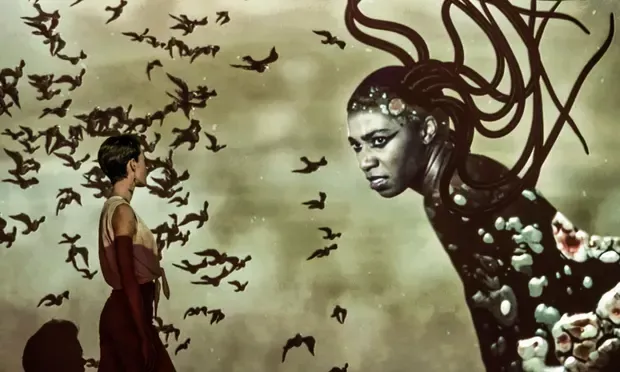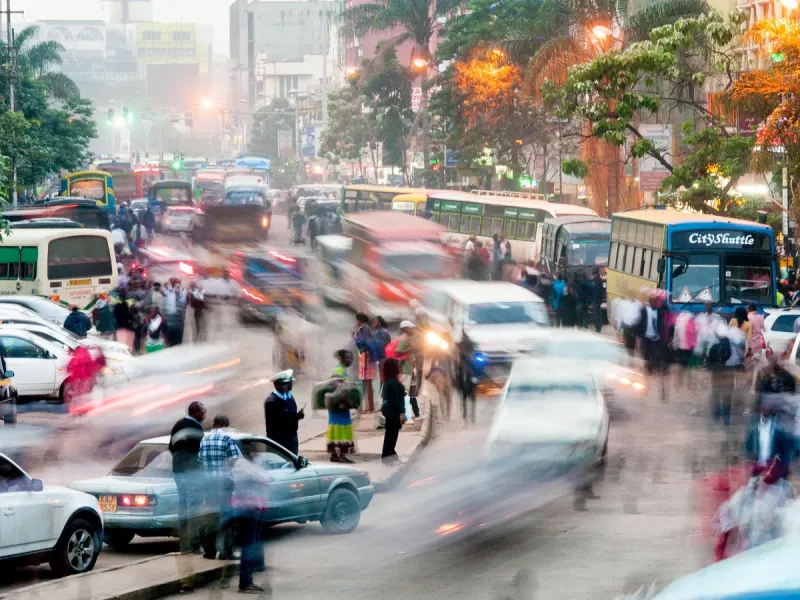In recent decades, the best world-building fiction has begun to shed its roots in European mythology in favor of new ideas challenging the limits of the real
At the heart of every fantasy is something unreal, impossible, or at the very least, so extraordinary as to take us outside the universe we think we live in. Fantasy world-building surrounds those unreal things with recognizable furniture and plausible emotion, so that Coleridge’s “willing suspension of disbelief” can kick in. As writers from Tolkien to Pratchett have taught us, the task for both writers and readers is easier when the impossible involves motifs and storylines we recognize from oral narratives such as tales, legends and myths. That also ties most fantasy literature, up to the turn of the millennium, to European culture, because the myths we know are likely to be Greco-Roman or Norse; the tales, German or French or sometimes Scandinavian.
Read Also: Africa’s wildlife parks managers meet to boost conservation
However, in this century, a new wave of fantasy challenges that European dominance. Writers of color and writers from indigenous cultures use magical narratives to depict experiences and express viewpoints difficult to convey within the constraints of realism. One of the effects of fantasy is the way it forces us to consider the categories of the real, the possible and the ordinary – all the norms that fantasy violates. And, in particular, the new fantasy reveals how culture-bound those norms are. Non-European traditions mark off boundaries differently and include as natural entities things we might think of as supernatural. Out of those different ways of setting the limits of the possible and assigning meaning to the impossible come different versions of the fantastic.
The works I list here not only tell engaging stories set in vividly imagined worlds, they are also worth reading for the way their versions challenge our sense of the ordinary and the limits of the real.
1. The New Moon’s Arms by Nalo Hopkinson (2007)
Caribbean Canadian writer Hopkinson is known for her science-fiction world-building, but she also excels at more intimate fantasies. The magic in this book involves the menopausal protagonist’s manifesting objects from her childhood as well as her encounter with a selkie child. The novel immerses readers in the sensory experience and social dynamics of its island setting, and its focus on the belated coming-of-age of a middle-aged woman challenges expectations about fantasy narratives.
2. Who Fears Death by Nnedi Okorafor (2010)
Like much of Okorafor’s work, this novel draws on her experiences as the child of Nigerian immigrants, hearing stories and spending time with extended family in Africa. Protagonist Onyesonwu, whose name translated from Igbo provides the book’s title, is the child of rape, fitting into neither of two societies but inheriting powers from both sides of her parentage. In a switch from the conventional “chosen hero” narrative, Onyewonsu ends up rewriting the prophecies and remaking her world. In this and other science fantasies, Okorafor helped to invent a form she calls Africanfuturism, which has been embraced by readers and emulated by a talented new generation of African and diasporic writers including Oghenechovwe Donald Ekpeki and Khadija Abdalla Bajaber.
3. Redwood and Wildfire by Andrea Hairston (2011)
Playwright and scholar Hairston pits Native and African American folklore against racism in this journey from the Jim Crow south to the beginnings of a Black movie industry at the Chicago World’s Fair. Stage magic converges with genuine conjuring to challenge violence and oppression. In a sequel, Will Do Magic for Small Change, Hairston follows her protagonists back to their African roots and forward into a future among artists, ghosts, and (surprisingly) aliens.
4. Alif the Unseen by G Willow Wilson (2012)
Wilson was working as a journalist in Cairo during the Arab spring uprisings of the early 2010s. This World Fantasy award-winner combines computer hacking and Arabic mysticism in a dazzling tale of love, economic disparity, adventure, and the power of metaphor. Along the way, Wilson also satirizes herself in the minor character of an American convert to Islam who is blind to most of the magic going on around her.
5. A Stranger in Olondria by Sofia Samatar (2013)
In this gorgeously written tour of a complex secondary world, Samatar explores ghosts, culture clashes and the effect of written language on a purely oral culture, while also providing engaging characters and a rousing adventure story. The imagined world of the fiction reflects Samatar’s own immersion in multiple cultures as the daughter of a Somali immigrant and a scholar of Arabic literatures with teaching experience in Sudan and Egypt.

All the awards … NK Jemisin at New York Comic Con 2019. Photograph: Bryan Bedder/Getty Images for ReedPOP
6. The Fifth Season by NK Jemisin (2015)
Jemisin won all the awards, and justly so, for the books of her Broken Earth trilogy, of which this is the first. The books might take place in a far future on a world that is not our Earth, but clearly they also connect with the here and now, with themes of climate change, environmental degradation, racial injustice and the burdens of the past. A daring second-person narration and a complex, admirable but not always likable hero make this book much more than the sum of its themes.
7. The House of Shattered Wings by Aliette de Bodard (2015)
Alternating between science fiction and fantasy, de Bodard has already amassed an impressive number of Nebula, Locus, and British Science Fiction Association awards. This novel is the beginning of a gothic fantasy series involving fallen angels and a war that has left Paris half in ruins and contaminated by magical pollution. The contamination reaches the depths of the Seine, where, unknown to most people (and other beings) on land, a community of Annamese, or Vietnamese, dragons has taken refuge. The series reflects the multi-racial politics and multicultural reality of contemporary European cities.
8. Black Sun by Rebecca Roanhorse (2020)
Roanhorse caught the attention of the fantasy and science fiction community in 2017 with a satirical short story called Welcome to Your Authentic Indian Experience. She followed that up with a pair of science fantasies juxtaposing Diné legends on a post-apocalyptic landscape, and, in Black Sun and its sequels, has ventured into epic fantasy. Her fantasy world is a magical version of Meso-America without European invasion: its conflicts result from tensions within and between the factions and religious cults of the continent of Meridien.
9. The Water Dancer by Ta-Nehisi Coates (2020)
With this book, Coates moved deftly from nonfiction to novel-writing. His story is set in the pre-civil war south but rarely uses the word “slave” to describe the people Coates calls Tasked. Rich historical detail conveys the terrible effect of the Task on everyone caught in the system, and especially young, gifted Hiram Walker. Walker’s own Task includes tending to the feckless legitimate son of the master, who is his half-brother. From his mother, Hiram has inherited an unpredictable magical gift of escape, the Water Dancing of the title. As he learns to harness this gift, he goes to work for the great Harriet Tubman. Like Octavia Butler in Kindred, Coates finds the horrors of slavery too overwhelming for mere realism: only the fantastic can take the reader into such a world.
10. A Master of Djinn by P Djèlí Clark (2021)
Historian Clark departs from his studies of the American past in this magical alternate history set in a steampunk Cairo in the early 20th century. The novel is a mystery featuring a stubborn female detective taking on powerful human and non-human adversaries. The real interest is not so much in the plot as the characters’ interaction and the richly detailed setting. This Cairo is a meeting-place of east and west, north and south (one of the recurring themes is the racial profiling of Nubians and Abyssinians by the paler Egyptian aristocracy), past and present, science and magic, all deftly invoked in details of architecture, costume and custom.




